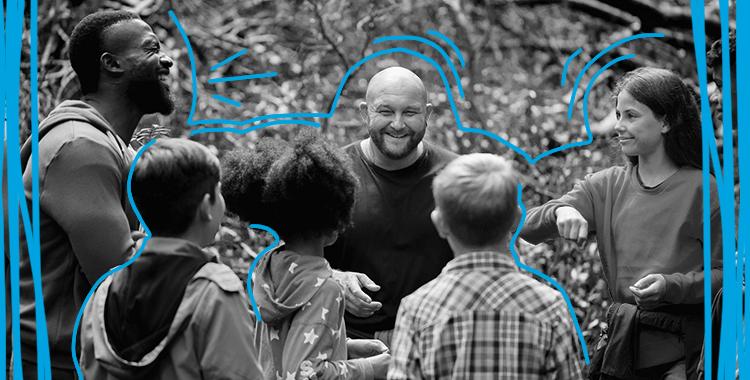Home and community: From helping "my kids" to helping all kids

The pandemic has underscored many longstanding educational inequities we knew about or should have known about. Among the most acute, I think, is the inequity caused by the vast differences in social networks that kids bring to the act of learning.
Kids with broader social networks that include caring adults tend to thrive in school because the professional and life experiences of those adults — and their willingness and ability to share those experiences — catalyze curiosity and learning. Broader networks also allow children to develop socio-emotionally and to build relationships with more people.
Social networks, of course, begin at home with parents, caregivers, siblings and others. During the pandemic, when so many children have been attending school remotely, learners with caregivers who can help them have been more likely to succeed than those whose parents can’t help them. The reasons, of course, that many parents can’t attend to their children’s learning illustrate equity challenges. They may have to work outside the home; and, as difficult as it is for parents and caregivers to juggle working from home with overseeing an elementary school student's remote classes, the fact that they are able to work from home puts their child at a huge advantage over one whose parents are working out of the home.
Then there is the question of skills. Teachers can be forgiven for taking a bit of welcome-to-my-world satisfaction when hearing so many parents, having had some of the duties of schooling thrust upon them, acknowledge how hard it is to help kids read, write or subtract. Many adults can find it challenging enough just to get a child to sit still for 27 minutes, let alone master the reading and pronunciation of diphthongs.
At MLFTC, we have seen demand for a series of free online courses we developed to help parents and guardians complement the work of teachers and schools and support their children’s learning. The courses address reading, writing, math, mindfulness and physical activity. Sometimes the tips are as simple (but no less valuable for their simplicity) as teaching adults the correct way to hold a book when reading aloud with young children. Sometimes the courses address more complex terrain such as word-solving strategies for beginning readers.
We are developing more.
Our work has gained notice because the pandemic has caused many people to ask “how can I help my child learn now?” And that’s great.
This is part of our commitment to building the Next Education Workforce.
The same skills that we see parents and caregivers wanting to learn in order to help their own kids are needed in classrooms to support and complement the work of professional teachers.
For years, we’ve been building a theory of action about how to incorporate community educators into teams with certified teachers in schools. We know teachers need help. We know they can’t do everything alone all of the time.
The pandemic has generated a lot of thought (and data) about such questions as whether tutors, volunteers and trained non-professionals can help mitigate learning loss. (They can.)
Today, parents and caregivers are asking “How can I help my child now, during this abnormal time?”
Tomorrow, I hope that those same people, especially those with broad and rich social networks with so much to give, will ask, “How can we help all kids all of the time and make doing so normal?”